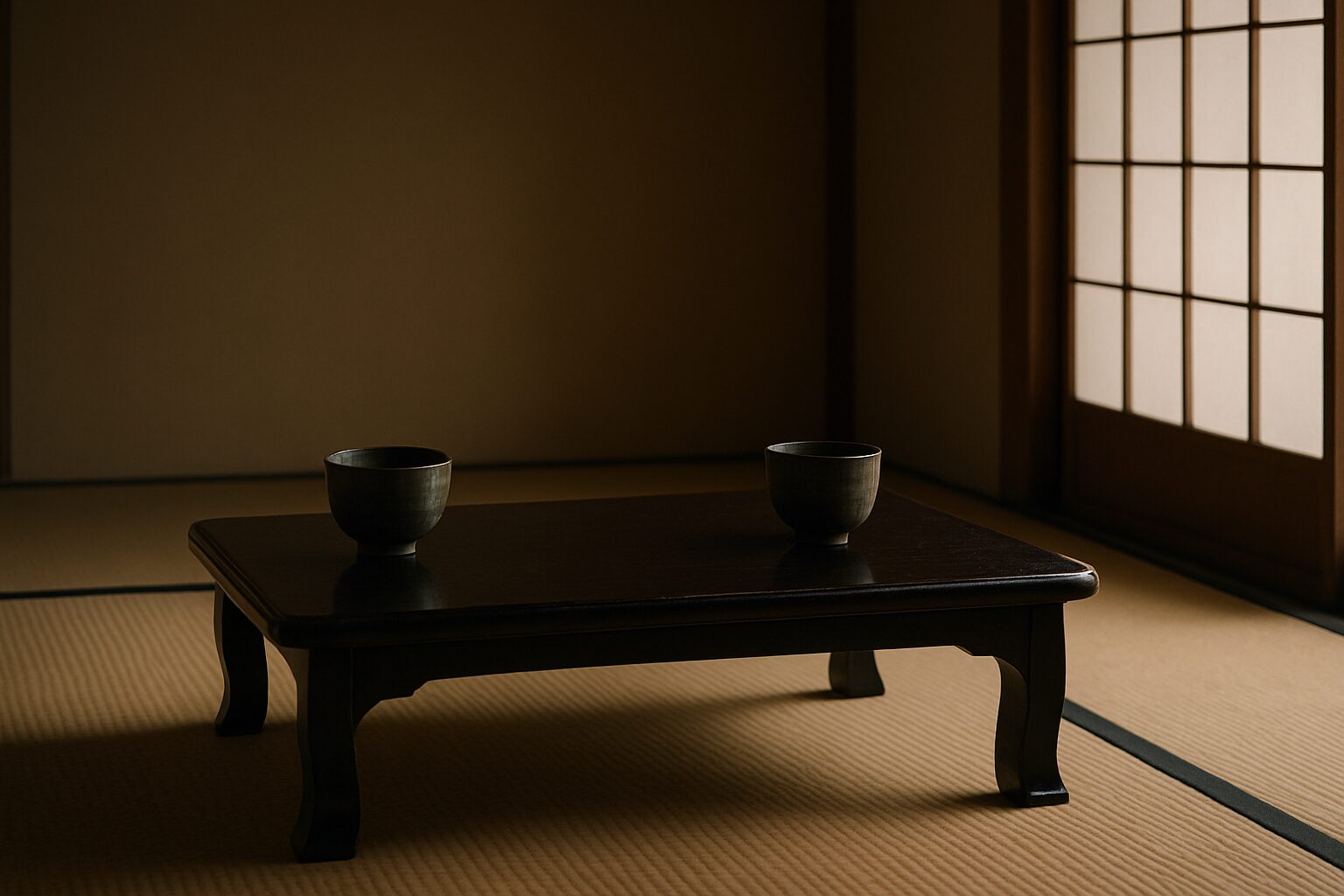By Kokoro Still
The most sacred part of a temple is not always what stands. It is often what is left open.
There is a presence in what we do not fill.
A kind of breath.
A stillness that waits.
And in Japan, this space has a name.
It is called Ma.
A Room that Breathes
I once stepped into a room where no one had spoken for hours.
The paper doors were closed, the tatami untouched.
And yet, the space was not still.
It was breathing.
The scroll hung with space on all sides.
A single flower stood in a low vase.
Nothing crowded the room.
And because of that, something was present.
In the quiet, I understood:
Ma is not an emptiness to be filled.
It is a fullness that asks to be felt.
What Is Not Placed
In a Japanese tea room, not placing something is just as important as placing it.
A niche may hold a single scroll. Or nothing at all.
The design trusts the viewer to pause, to breathe, to perceive.
This is not minimalism.
It is not aesthetic restraint.
It is spiritual precision.
Ma is not a style.
It is a way of seeing — and of leaving space.
Between the Notes, Between the Step
Listen to the pauses in a Noh performance.
Notice the space between each gesture, each breath.
That silence is not empty — it carries meaning.
In Japanese music, the beat does not dominate.
It waits. It invites.
Between the notes, Ma lets sound be more than sound.
And in life, between the steps we take,
there are pauses that let meaning gather.
Not to Fill, But to Notice
Ma does not ask us to add more.
It asks us to be more present.
To not interrupt the silence.
To not rush past the pause.
To not explain what does not need explaining.
Sometimes, the most generous act is to leave space.
Not for absence,
but for something unnamed —
to emerge.
Kokoro does not rush to fill. It waits — and in that waiting, it breathes.
So much of life today is noise, demand, urgency.
But Ma teaches us to make room.
For stillness.
For others.
And for something sacred we cannot name.
What space have you not yet noticed?
And what might it hold —
if you let it be?
feel free to share a quiet thought in the comments.
Or simply carry it into your day.
*The featured image was generated using ChatGPT.*
What did this moment bring to mind for you?
Leave a quiet note below — or simply carry it with you into your day.



コメント